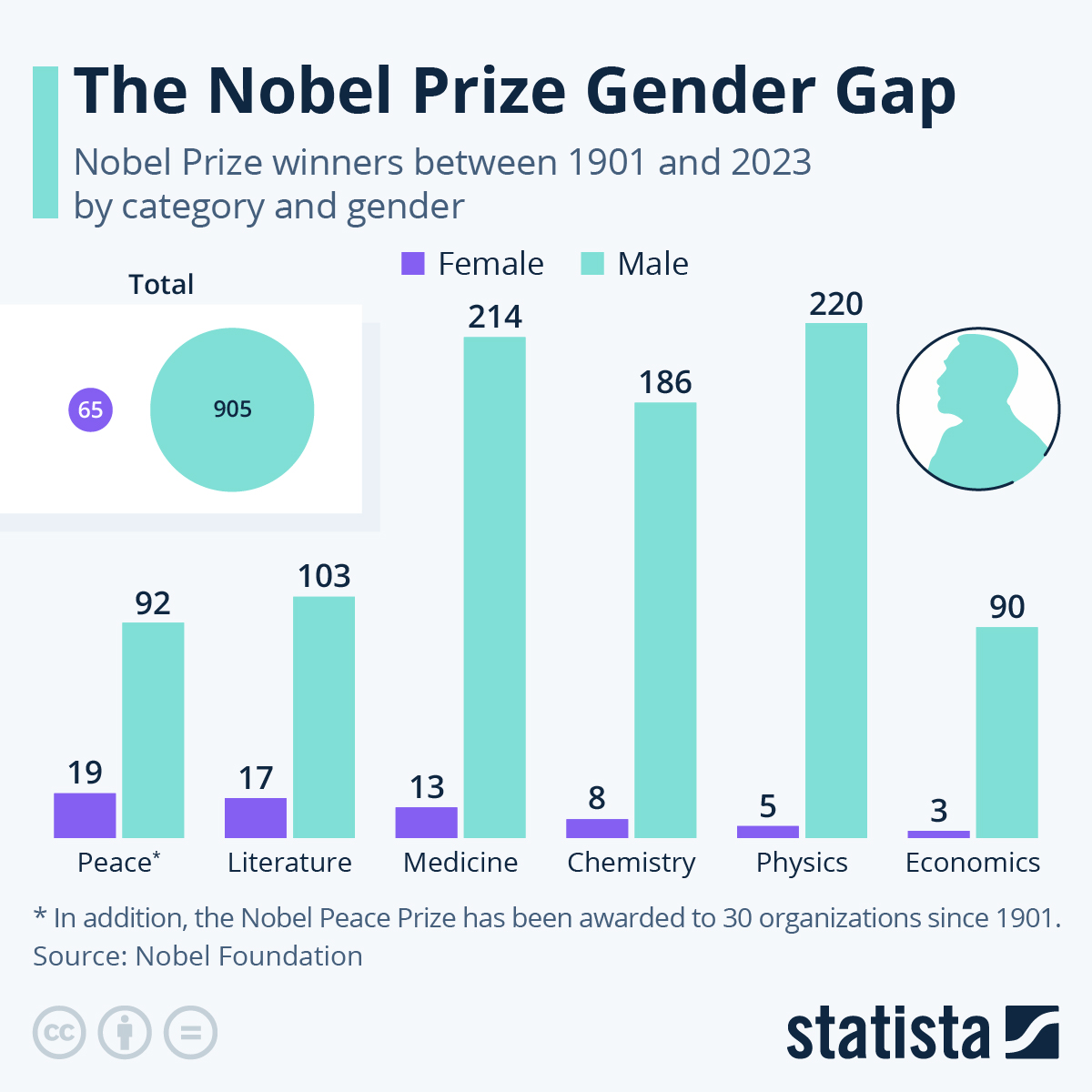2023 has been a banner year for women at the Nobel Prize, as four female laureates stand opposite seven male honorees. Perhaps more importantly though, three women, Claudia Goldin in Economic Sciences, Katalin Karikó in Medicine and Anne L'Huillier in Physics, were honored in fields that have been heavily male-dominated since the Nobel Prize's inception in 1901. Goldin, who was awarded the prize for “for having advanced our understanding of women’s labour market outcomes”, was only the third woman to win the Sveriges Riksbank Prize in Economic Sciences in Memory of Alfred Nobel, as it's officially called, and the first to be the sole winner in any year.
Marie Curie was the first female scientist to receive the Nobel Prize in 1903 and to this day, she's the only woman to be honored twice. There have been a total of 65 female Nobel laureates in the prize's long history, most of them in the peace and literature categories. The chart below shows a gender breakdown of all (non-institutional) Nobel Prize winners, illustrating the vast gender gap in laureates, especially in chemistry, physics and economics, where less than five percent of all winners have been female. The Nobel Peace Prize has most frequently been awarded to women, with Iranian human rights activist Narges Mohammadi becoming the 19th female laureate in the category this year. Mohammadi was honored for “for her fight against the oppression of women in Iran and her fight to promote human rights and freedom for all”. She is currently imprisoned in Tehran's infamous Evin Prison for her political activity.




















